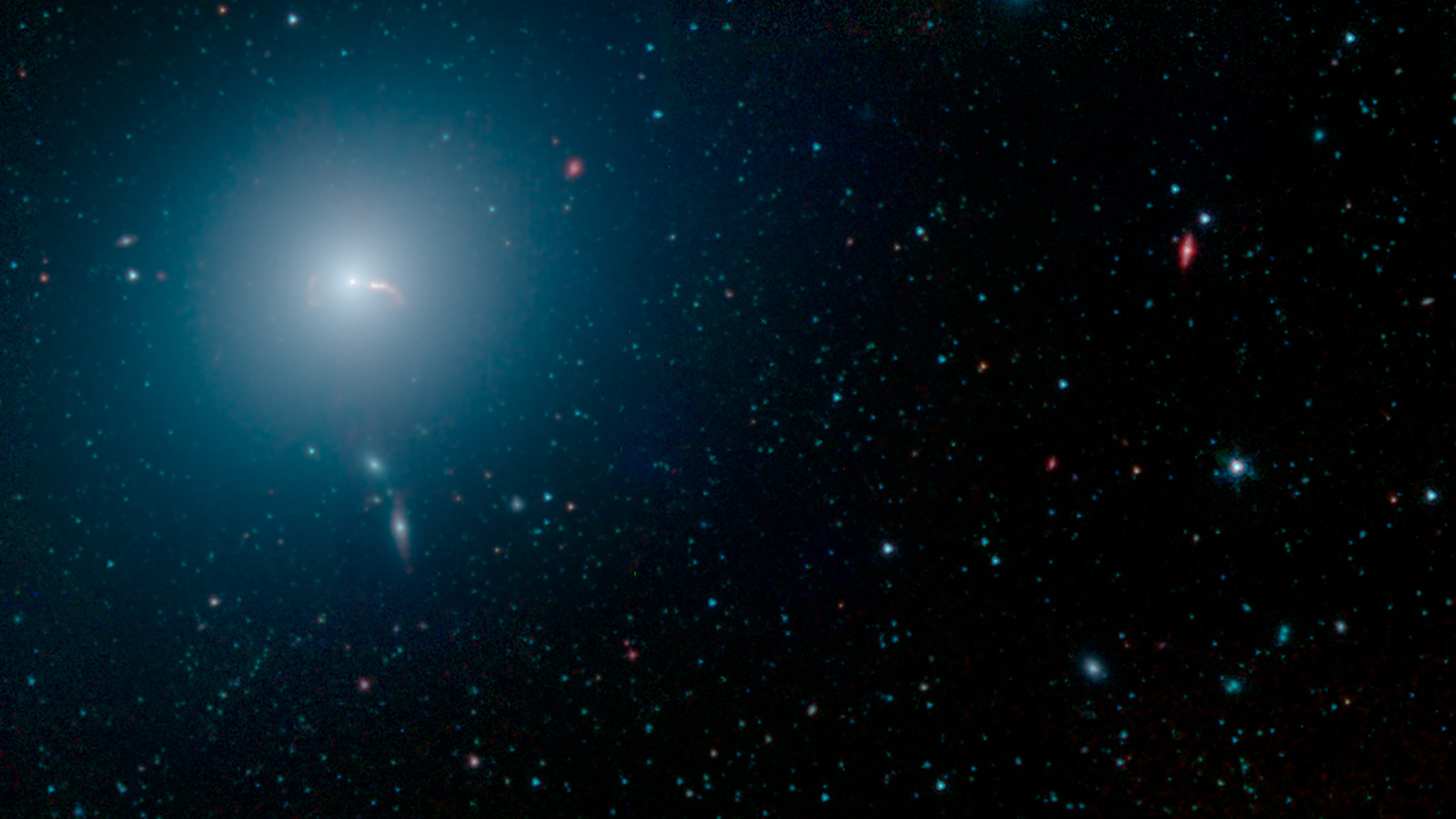Stay Up to Date
Submit your email address to receive the latest industry and Aerospace America news.
NASA about to decommission its groundbreaking space telescope
Update: NASA tweeted at 5:34 p.m. EST Thursday that the Spitzer had been decommissioned.
Sixteen years in space exacted a toll on NASA’s Spitzer Space Telescope. The roughly car-sized spacecraft was down to one science instrument from three, running backup electronics, only able to transmit data during short stints, and about to disappear behind the sun for a few years.
And so, today at 2 p.m. Pacific time, NASA plans to send commands to complete the decommissioning of Spitzer, ending a $1.36 billion mission that gave astronomers unprecedented views of distant galaxies, comets and more, and contributed to the 2017 discovery of seven Earth-sized exoplanets.
The commands from controllers at the NASA-funded Jet Propulsion Laboratory in California will put the craft into safe mode, considered a dignified send off for a venerable spacecraft. The solar arrays will constantly face the sun as Spitzer spins, like the blades of a fan, to evenly spread out the solar pressure and help keep the orientation steady.
The fourth of NASA’s Great Observatories has been trailing in Earth’s orbit since its launch in 2003. What made Spitzer unique was its Cryogenic Telescope Assembly, a shelter cooled by helium that kept the telescope operating at just two degrees above absolute zero for much of its life. At that temperature, light that’s been stretched to thermal infrared wavelengths by the motion of distant objects stands out, as do the infrared wavelengths from features that would otherwise be obscured by celestial dust.
Employees of Ball Aerospace and Lockheed Martin gathered for a wake of sorts last week at Lockheed Martin Space in Littleton, Colorado. Ball built Spitzer’s telescope assembly, and Lockheed Martin made the spacecraft frame and electronics. In interviews with me afterwards, engineers recounted the mission’s glory days and challenges.
For one, there was some minor but mysterious damage to Spitzer some years ago.
“We lost a little bit of the top of one of the solar arrays because it peeled away,” says Lockheed Martin’s Mark Fisher, who was Spitzer’s lead engineer at the time.
“It wasn’t a problem. We had plenty of power,” he says.
An impact with a micrometeoroid was the top suspect, but “we really don’t know,” Fisher says. “I would love to pull [Spitzer] down and find out,” he adds wistfully.
Spitzer lasted years longer than expected. Its decommissioning marks the start of what astronomers hope will be just a temporary hiatus in infrared astronomy conducted in space, where Earth’s atmosphere does not wash out the infrared light from the cosmos.
Space-based infrared astronomy will resume when NASA’s James Webb Space Telescope reaches space with a mirror 50 times bigger than Spitzer’s. That’s scheduled to happen in 2021, although NASA is reassessing the feasibility of that date.
Spitzer’s primary mission, the so-called “cold mission,” ended in 2009 when its helium ran out, just as designers knew it eventually would. Since then, the science community has settled for detecting less-cold infrared wavelengths. Scientists made one of Spitzer’s greatest discoveries in this latter stage, when they focused Spitzer toward a dwarf star discovered two decades earlier. In 2015, scientists operating the Trappist telescope in Chile concluded that two to four planets might be orbiting the dwarf star, which they started calling Trappist-1. When Spitzer took a look, scientists identified seven planets by applying the planetary transit technique. NASA believes that at least three of these planets could harbor liquid water.
The decommissioned Spitzer will be out of range of Earth for a few years, blocked by the sun.
Could NASA someday revive Spitzer? Probably not.
For one thing, NASA and Lockheed Martin are dismantling its computer network.
Also, the supply of nitrogen gas that Spitzer will continue to rely on to control its attitude, even in safe mode, will run out in a matter of years. At that point, the spacecraft will vibrate, probably breaking some equipment, although engineers don’t expect that the spacecraft would break apart.
Earth will catch back up to Spitzer in the 2050s.
“It’d be cool if like in 200, 500 years someone picks it up and puts it in the Air and Space Museum,” says Lockheed Martin’s Mark Effertz, a former lead engineer for Spitzer.
About Amanda Miller
Amanda is a freelance reporter and editor based near Denver with 20 years of experience at weekly and daily publications.
Related Posts
Stay Up to Date
Submit your email address to receive the latest industry and Aerospace America news.





